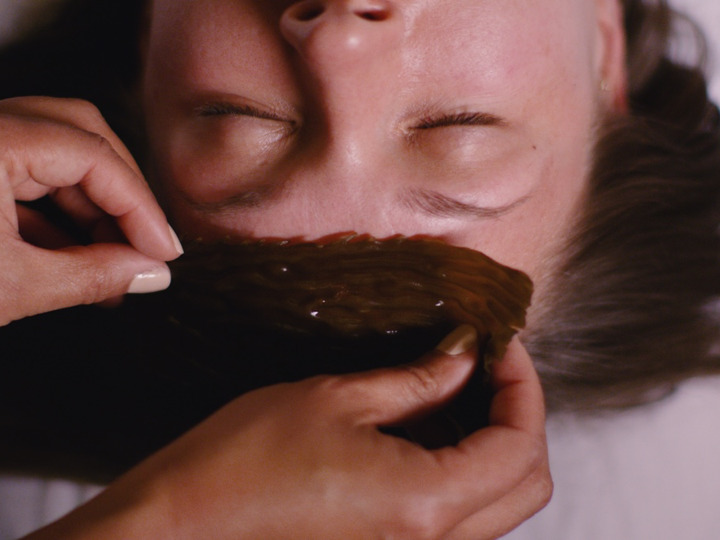Is Seaweed Good for Acne Prone Skin?
Seaweed is a widely beneficial ingredient for any skin type, especially acne prone. When the average person thinks of acne fighting skincare ingredients, they usually think of benzoyl peroxide, antibiotics, and other potentially harmful ingredients or prescriptions. In this blog, we’ll explain some of the science behind why seaweed is such a perfect ingredient for anything skincare, and why seaweed is especially good for acne prone skin.
Acne Causing Bugs Live On Your Skin
Most people have thousands —probably millions — of tiny bugs called mites living in their hair and on their skin. And now a University of Florida researcher says the microscopic mites may be linked to thinning hair, acne and other skin conditions. The majority of people are asymptomatic, but an excessive amount of Demodex mites causes acneic problems. The mites live for weeks, reproducing, dying, and decomposing within hair follicles or sebaceous glands, which is why washing your face twice a day is so important. They also can live in towels, bedsheets, pillow cases, and clothing. Most acne is caused by mite faeces decomposition and related bacteria, which means the more sebaceous oil your body produces, the more the mites eat. Because they have no way to poop out what they eat, when they die in the pore or follicle, pus is produced. Acne normally stops when mites are no so well fed, so the trick is controlling the production of sebaceous oil.
What is that goopy stuff from Seaweed? Is it good for Acne Prone Skin?
Natural, marine-derived ingredients, such as those derived from brown seaweed, can provide potential benefits. Seaweed oligosaccharides, which are derived from the polysaccharide membrane, and a novel seaweed oligosaccharide-zinc complex are the two most common seaweed derived ingredients to combat acne prone skin.
In a study by the US National Library of Medicine and the U.S. National Institutes of Health, they found that “Seaweeds are major resources for in-demand active compounds with a wide variety of applications. The use of seaweed-derived ingredients in cosmetic products have increased in recent years as many scientific studies have proved the potential skincare properties of seaweed bioactive compounds. The review outlines the mechanism involved in skin problems including hyperpigmentation, premature skin aging, and acne in the first part while the second part focuses on the promising application of seaweeds in skin protection by highlighting the bioactive compound responsible for their bioactivity.”
Seaweeds contain all that we need to sustain healthy, happy skin. Their simple cell structure allows them to transfer their beneficial vitamins, minerals, unique compounds and other essential nutrients directly into our skin without help of a synthetic penetration enhancer. Seaweed already contains alginate. Alginate is a natural penetration enhancer that is already used in transdermal patches to enhance the effectiveness and seamless penetration of the medication added to the patch. Having raw, organic seaweed in a skincare product will allow easy access to the circulatory system for all the beneficial ingredients to take action in the body, and irrigate your cells with perfect cell food. Seaweed gives you REAL results, really fast!
So, why would seaweed be so effective for acneic skin?
Seaweed has shown a ton of skincare benefits and healing properties, helping treat everything from overproduction of oil to fine lines and wrinkles. In treating acne, detoxification is one of the best things you can do for your body and is best done through the skin. The skin acts like a report card of how well your internal systems are doing. In fact, where your acne outbreaks occur and the severity of them can tell us alot about the health of specific internal organs and systems.
Due to hormones, diet, and many other factors, the pores can become blocked with oil, dead skin, environmental pollutants, and bacteria, with the result being red, inflamed, pustule bumps on the skin, called acne. So, how does seaweed help battle the causes of acne? Why is it such a great option for anyone looking for a holistic way to correct their skin?
Seaweed is packed with nutrients, and acts as a delivery system for the nutrients in the way that it opens the pores and affects the acid mantle. The acid mantle is the thin, protective layer on the skin’s surface. The barrier is strong enough to protect the skin but can easily be thrown out of balance. The free fatty acids excreted from the skin’s sebaceous glands, mixes with lactic and amino acids from sweat to create the skin’s pH.
When it comes to skin, pH may be one of the most important details. The acid mantle needs to be around a 5.5 pH to work its best. When it’s too alkaline, skin becomes dry and sensitive; you may develop skin conditions like eczema. Seaweed delivers a powerful cocktail of vitamins, minerals, trace minerals, phytonutrients, antioxidants, fatty acids and amino acids directly into your skin, which means a lot of these are then absorbed into the blood stream, benefiting the entire body. If hormones are causing excess production of sebaceous oil, the phytonutrients will target the root of the problem and help balance your hormones. Hormonal imbalance is the root cause of many health issues these days, and it is a good idea to learn what is throwing off our hormones in the first place, so you can make small positive changes that are sure to improve your health.
Seaweed Helps With:
- Regulation of oil production — There have been studies showing that some seaweed works to decrease oil production, while some others decrease the bacteria involved in the formation of acne. This means seaweed makes an amazing ingredient for anti-acne cures.
- Diminishing the look of fine lines and wrinkles – Seaweeds like Laminaria are a rich, natural source of antioxidants (like vitamin C) and amino acids (like glycine). These promote collagen production. More collagen means that Laminaria helps to smooth lines and give the appearance of plumper, more youthful-looking skin!
- Heals acne, rosacea, and sensitive skin — Seaweed has been shown to help soothe skin conditions associated with inflammation, like acne, rosacea and eczema. It has anti-inflammatory properties and contains many natural minerals that it soaks up from its ocean environment. Magnesium and zinc, to name two, have been known to help improve redness in sensitive skin. Seaweed also shields the skin from harsh environmental conditions by creating a protective barrier on the skin.
- Moisturizes the skin: Seaweed contains essential fatty acids that help maintain our skin’s barrier. It’s also full of polysaccharides like alginic acid, which helps to lock moisture into our skin. In the brown algae where this polysaccharide is found in the cell walls, it’s used to retain moisture in the seaweed when it’s exposed to harsh conditions and to stop it from drying out in the sun.
- Brightens the skin: Seaweed (Kelp bioactive specifically) help with dark spots by affecting pigment production and how pigment is transported in the skin. Skin coloration is largely due to the presence of melanin pigment. Production of melanin is largely controlled by the tyrosinase enzyme. Skin brightening agents work by inhibiting this enzyme.
In a comparison between Seaflora’s seaweeds and Organic Seaweed Elixir vs Kojic Acid and Arbutin, the active components of seaweed showed a 71 % reduction in melanin production and 28% reduction in dark spots, after just 4 weeks of treatment. Check out Seaflora’s partnership with the National Research Council of Canada that lead to the scientific discovery that helped create Seabright Moisturizer for Hyperpigmentation.




